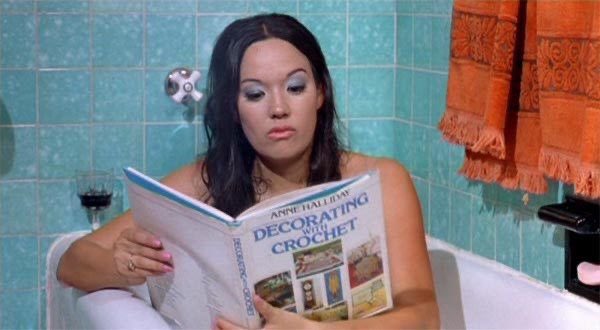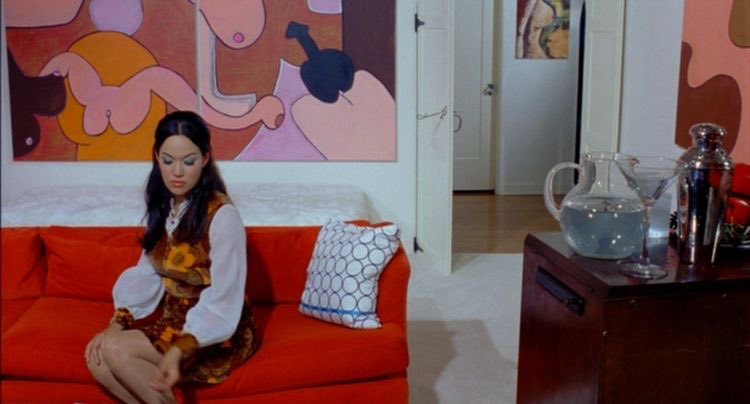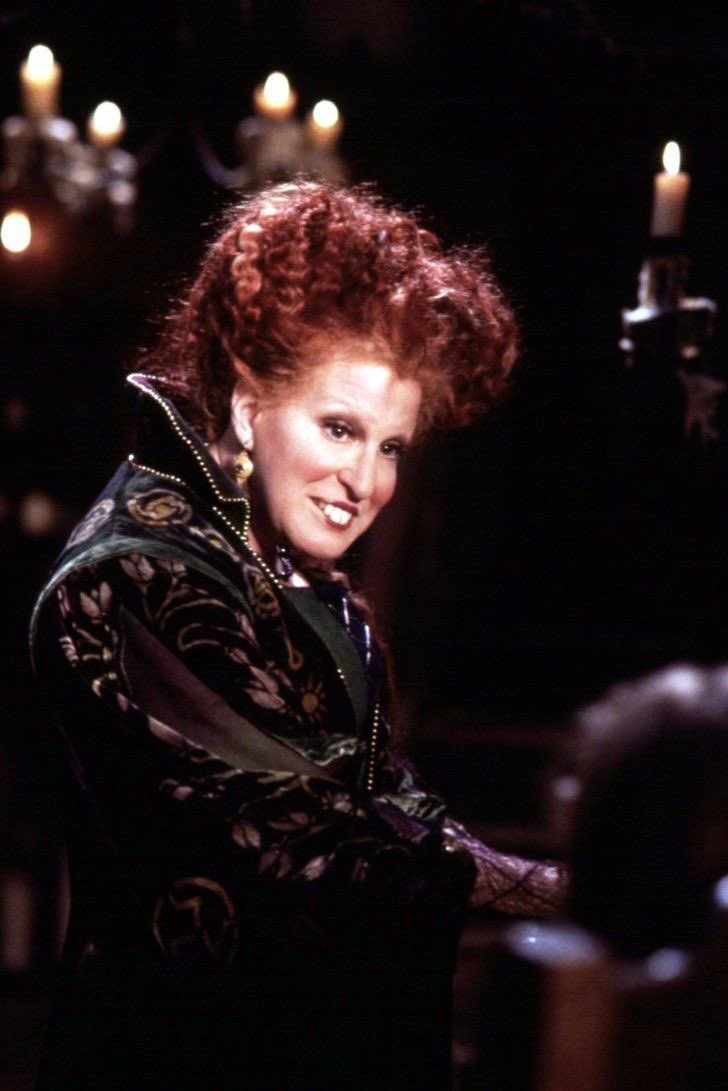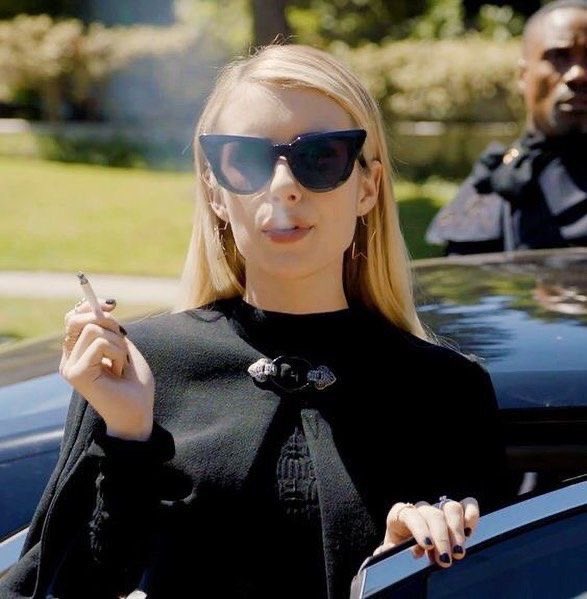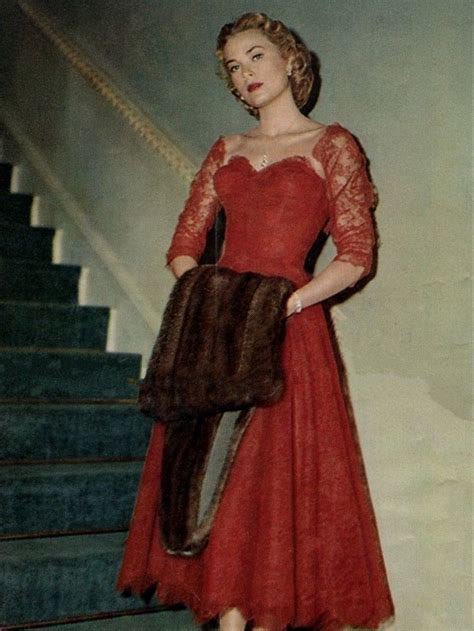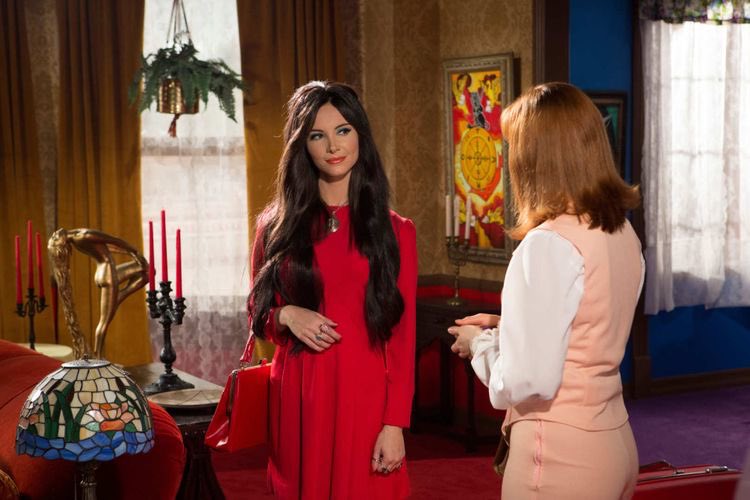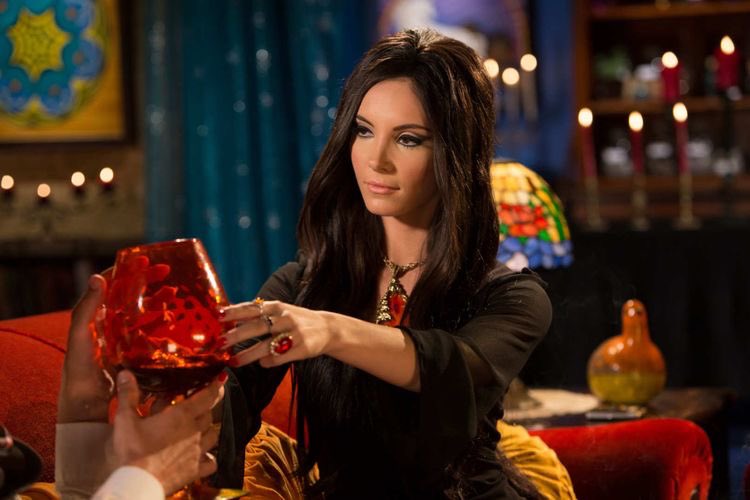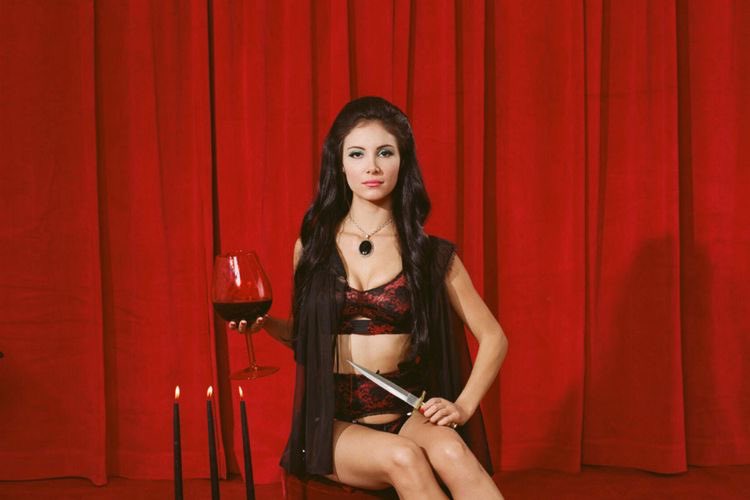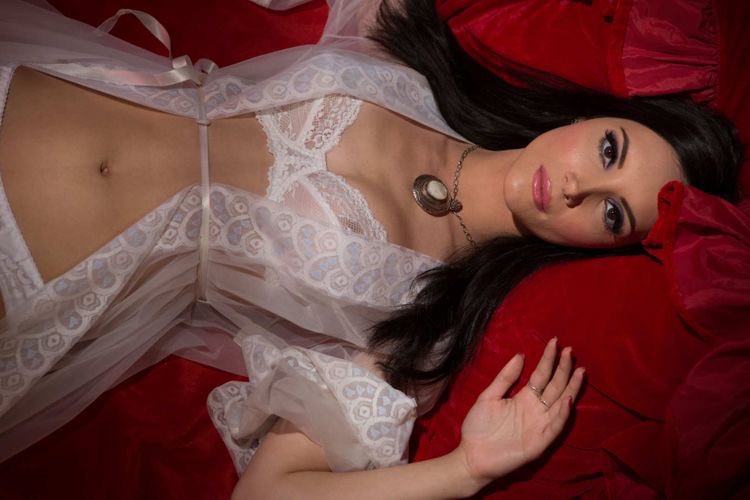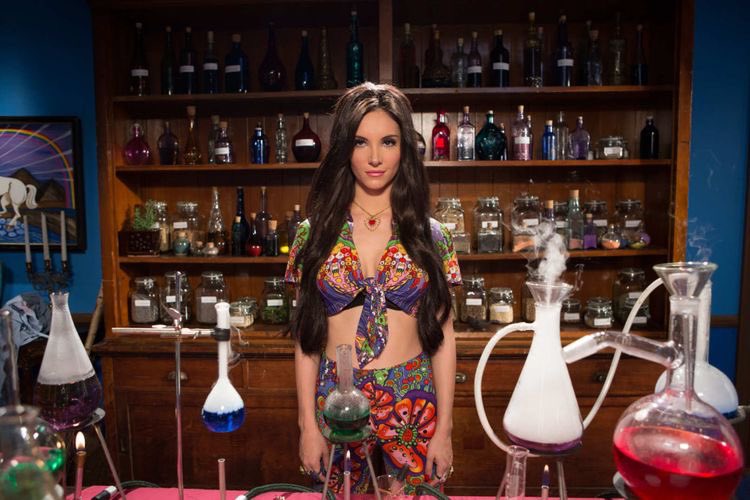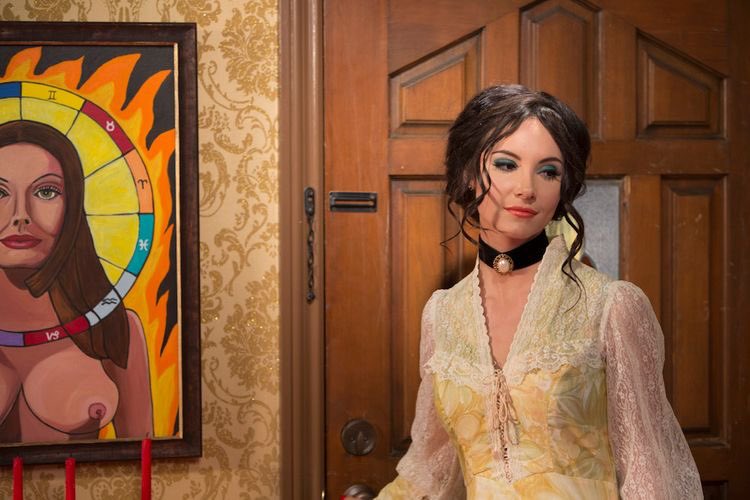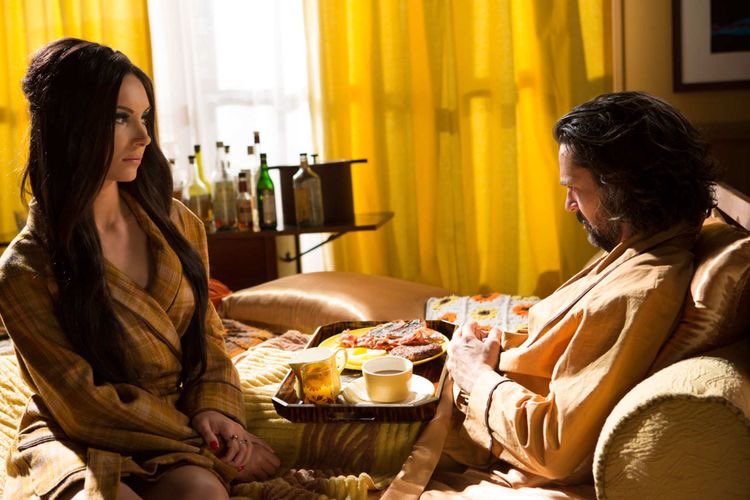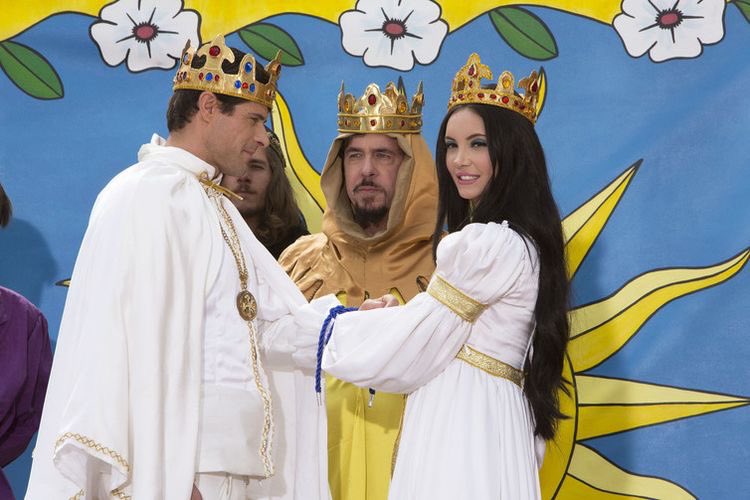THE LOVE WITCH — fashion in film
A look into the psychedelic costume design which strays away from the stereotype that witches should always be dressed in black.
A look into the psychedelic costume design which strays away from the stereotype that witches should always be dressed in black.
.INTRODUCTION—
With its gorgeously vibrant, highly stylized visuals, the 2016 film shot by a 35mm film by @missannabiller is constantly praised for its playful tribute to campy 1960& #39;s horror and Technicolor films. And with keen attention to the visuals, in comes the fashion.
With its gorgeously vibrant, highly stylized visuals, the 2016 film shot by a 35mm film by @missannabiller is constantly praised for its playful tribute to campy 1960& #39;s horror and Technicolor films. And with keen attention to the visuals, in comes the fashion.
We must give an immense amount of credit to Anna herself, for she not only directed, wrote and produced the film, the costumes and vivid artworks that adorn the walls of Elaine& #39;s home have all been meticulously crafted by her, just as she did with her 2007 film, Viva.
Fun Fact: Biller is a self-taught seamstress. Her mother was a designer, and growing up she would just watch her mother as she sewed, learning on her own using patterns until she took a class at UCLA.
.INSPIRATION—
When asked about the inspiration behind Elaine& #39;s clothing Biller says she wanted the costumes to come from Elaine& #39;s self-fantasies. They were handmade from vintage pattern, with the exception of the Gunne Sax dresses.
When asked about the inspiration behind Elaine& #39;s clothing Biller says she wanted the costumes to come from Elaine& #39;s self-fantasies. They were handmade from vintage pattern, with the exception of the Gunne Sax dresses.
We are so used to seeing witches either portrayed as ugly or incredibly beautiful — but solely wearing head-to-toe black. But Elaine& #39;s sartorial style is the opposite of the typical cinematic witch — a psychedelic, mystical rainbow. She& #39;s Morticia Addams meets Mary Quant.
“I watched a lot of classic films shot in Technicolor and one of the things I loved most was the use of color symbolism, so I tried to emulate it. The dress in the opening scene is like the ‘harlot-red’ dress Grace Kelly wears in Dial M for Murder.”
.PEACH & TEAROOMS—
Trish wears peach just as she did when Elaine first meets her, however Elaine changes out of red and into pink and peach to fit in with everyone else. “It& #39;s to symbolize femininity, and almost feels like an all-enclosing womb,” Biller says.
Trish wears peach just as she did when Elaine first meets her, however Elaine changes out of red and into pink and peach to fit in with everyone else. “It& #39;s to symbolize femininity, and almost feels like an all-enclosing womb,” Biller says.
Elaine& #39;s dress was vintage, by Gunne Sax. They made a lot of romantic dresses in the ‘60s and ‘70s, a look Biller was going for, and so she was able to find this dress for the film. The company also had fabrics that are hard to find nowadays, like the peach fabric of the dress.
Trish& #39;s pantsuit “was enormous” as Biller says. “I had to basically just remake it from scratch because it was so big, but at least I have the fabric there. I used another vintage pattern of a vest pantsuit thing and remade that, and her blouse is vintage.”
In the second tearoom scene Trish is mourning and Elaine is about to be a bride, and we come full circle from the beginning where it was the opposite. But because this is all from Elaine& #39;s destruction, rathher than being dressed in the same colors, now they& #39;re in opposite colors.
The scene itself was inspired by an actual tearoom Biller once visited where all the women wore hats trimmed with flowers and pastel colors. “I really saw Elaine in that setting, with all of her princess fantasies.”
.BLACK & BLUE—
“For me, that& #39;s a very occult type of color, that robin& #39;s-egg blue color,” says Biller about Elaine& #39;s blue robe. She made many, many different robes for this movie. Vintage palettes were used. This robe as well as a black robe were made of a silk-chiffon fabric.”
“For me, that& #39;s a very occult type of color, that robin& #39;s-egg blue color,” says Biller about Elaine& #39;s blue robe. She made many, many different robes for this movie. Vintage palettes were used. This robe as well as a black robe were made of a silk-chiffon fabric.”
Biller wanted a black dress similar to Elvira& #39;s, something very stereotypical of what a witch looks like — a long black dress, with long bell sleeves. These were very fashionable in the ‘70s, usually made of printed fabric. “I used an early ‘70s Simplicity pattern for the dress.”
.LINGERIE—
The lingerie in the film are fetishistic versions of ‘60s underwear. “This is new; I& #39;m not going to put her in old underwear if I can help it,” says Biller. “It& #39;s like this reproduction lingerie rhat they& #39;re making that& #39;s very fetish-influenced.”
The lingerie in the film are fetishistic versions of ‘60s underwear. “This is new; I& #39;m not going to put her in old underwear if I can help it,” says Biller. “It& #39;s like this reproduction lingerie rhat they& #39;re making that& #39;s very fetish-influenced.”
“She looks so powerful in the photo. She& #39;s also got her dagger, and her expression is just to kill. She& #39;s this very powerful witch and then she& #39;s in this lingerie. It& #39;s very aggressive, actually, with the knife, so it& #39;s like, ‘Come hither, but don& #39;t.’”
“The whole movie is like that. This idea: She& #39;s enticing, but she& #39;s also saying, ‘Stay away,’ and that& #39;s part of her power. She represents this oind of confusing dilemma for men.”
This set is vintage because it& #39;s no longer being made with the seam in the middle. Biller also struggled to find a regular pair of white lace panties, eventually finding them in a bridal shop. “That is the most flattering style for most women, and they hardly make it,” she says.
“We looked everywhere. Finally, we found them at a bridal shop. We couldn& #39;t even find it online. It was amazing. Just a simple plain white lace underwear that wasn& #39;t a thong. It& #39;s almost impossible to find.”
OLD PATTERNS—
This outfit was made of new fabric and it has a spandex-y, polyester feel. The pattern is an early ‘70s Simplicity or Butterick pattern. Biller says she chose the fabric because the colors pick up the colors of the potions and bottles behind Elaine.
This outfit was made of new fabric and it has a spandex-y, polyester feel. The pattern is an early ‘70s Simplicity or Butterick pattern. Biller says she chose the fabric because the colors pick up the colors of the potions and bottles behind Elaine.
This is another dress Biller made from old patterns, made of a cotton paisley fabric. “I think it& #39;s a pattern for a wedding dress,” says Biller. Unfortunately the dress is only on screen briefly. “I thought it was funny that she& #39;s just wearing that at home.”
.YELLOW—
This is another Gunne Sax dress, which is similar to the pink one. Biller states that she tries to have people wear yellow in the sunroom because “there& #39;s the feeling of sunshine coming in the window, but then there& #39;s also a feeling of sunshine in the outfits.”
This is another Gunne Sax dress, which is similar to the pink one. Biller states that she tries to have people wear yellow in the sunroom because “there& #39;s the feeling of sunshine coming in the window, but then there& #39;s also a feeling of sunshine in the outfits.”
Because Wayne is a bachelor, Biller figured that Elaine would have to find something of his to wear. So there was the man& #39;s short robe (yellow plaid flannel). She had the idea that they would be matching; his robe is the exact same pattern (yellow cotton), just bigger.
Yellow was also chosen for the Renaissance scene becayse it was a summer solstice festival, which is all about celebrating the sun—hence the backdrop of the sun.
.RENAISSANCE—
All the costumes are made of silk and the crowns are made of cardboard; all handmade, “appearing like figures you see on tarot cards from 15th-century Italy.”
All the costumes are made of silk and the crowns are made of cardboard; all handmade, “appearing like figures you see on tarot cards from 15th-century Italy.”
Biller had worked full-time on the Renaissance costumes for a year. “Everything& #39;s lined, the fabric had to be washed, the hems are so, so, so wide, there& #39;s trim involved.” Some pieces would require a tuni, an over tunic, a cape, etc. “It was very time-consuming,” Biller says.
The costumes were inspired by the film, Peau d‘Âne by Jacques Demy. And they were 100 years later in time than other costumes in this scene because Biller “wanted them to be more typically fairytale-like.” Elaine& #39;s dress is from a Butterick pattern, which Biller had to make.”
.END—
Is it too bold of me to consider the clothing in the film timeless? I mean, the mix of both new and old, and making something that looks old out of new materials yet referring to old patterns? If she were real, we can& #39;t deny how Elaine would absolutely SERVE today.”
Is it too bold of me to consider the clothing in the film timeless? I mean, the mix of both new and old, and making something that looks old out of new materials yet referring to old patterns? If she were real, we can& #39;t deny how Elaine would absolutely SERVE today.”
The costume design, coupled with with the set design, has this magickal feeling that not even Elaine herself could create; from her makeup to her accessories; from the occult art nouveau paintings to her elaborate alter filled with colorful jars, bottles and what have you.
Oh! And how could I forget the rainbow lining in many of her clothes. Even her all-black outfit still have that touch of psychedelic vibrance because of it. In the film it& #39;s meant to represent how she hides this other side of herself. It& #39;s all in the details, people!
Anyways, I hope you all enjoyed this thread. Thanks for reading!  https://abs.twimg.com/emoji/v2/... draggable="false" alt="🔮" title="Crystal ball" aria-label="Emoji: Crystal ball">
https://abs.twimg.com/emoji/v2/... draggable="false" alt="🔮" title="Crystal ball" aria-label="Emoji: Crystal ball">
—sources.
• https://hellogiggles.com/lifestyle/home-decorating/the-love-witch-costumes-anna-biller/
•">https://hellogiggles.com/lifestyle... https://www.thecut.com/2016/11/the-love-witch-has-the-sexiest-costumes-youll-see-all-year.html">https://www.thecut.com/2016/11/t...
—sources.
• https://hellogiggles.com/lifestyle/home-decorating/the-love-witch-costumes-anna-biller/
•">https://hellogiggles.com/lifestyle... https://www.thecut.com/2016/11/the-love-witch-has-the-sexiest-costumes-youll-see-all-year.html">https://www.thecut.com/2016/11/t...

 Read on Twitter
Read on Twitter

